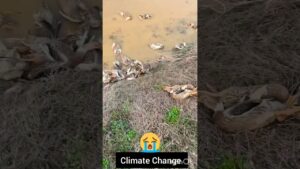
Why the Philippines is the No.1 Disaster-Prone Country in the World?”
⸻
0:00 – 0:10 | Introduction
(engaging clips of disasters like typhoons, earthquakes, floods, and volcanic eruptions in the Philippines)
“The Philippines is ranked as the most disaster-prone country in the world. Every year, it faces typhoons, earthquakes, floods, and volcanic eruptions. But why is this country so vulnerable? And what can Filipinos do to build resilience?”
⸻
0:11 – 1:30 | Why is the Philippines Disaster-Prone?
(clips of typhoons, floods, and earthquakes with animated maps of the Pacific Ring of Fire and typhoon paths)
“The Philippines is located in the Pacific Ring of Fire, where 75% of the world’s volcanoes and 90% of its earthquakes occur. It also lies in the typhoon belt, experiencing around 20 typhoons yearly. The combination of geological hazards, tropical storms, and rising sea levels makes it extremely vulnerable to disasters.”
⸻
1:31 – 2:30 | The Philippines’ Global Disaster Ranking
(statistics from the World Risk Index, news reports, and hazard rankings)
“According to the World Risk Index, the Philippines ranked #1 in disaster risk in 2022 due to high exposure and vulnerability. Cities like Manila, Cebu, and Davao are among the most at-risk globally. The country also faces landslides, droughts, and tsunamis, making disaster preparedness crucial.”
⸻
2:31 – 3:50 | Real Disasters in the Philippines
(real footage or images of major disasters like Typhoon Haiyan (Yolanda), Mount Pinatubo eruption, Taal Volcano eruption, and recent floods)
“Some of the most catastrophic disasters in Philippine history include:
• Typhoon Haiyan (2013), one of the strongest tropical cyclones ever recorded, claimed over 6,000 lives.
• The 1991 Mount Pinatubo eruption, the second-largest volcanic eruption of the 20th century, displaced thousands.
• The Taal Volcano eruption in 2020 sent ash clouds across Luzon, affecting thousands of families.”
⸻
3:51 – 5:10 | How Can the Philippines Become Disaster-Resilient?
(community preparedness drills, government response, and sustainable solutions)
“Despite its high risk, the Philippines can take steps to become more disaster-resilient by:
• Strengthening disaster preparedness programs through early warning systems and emergency drills.
• Improving infrastructure to withstand typhoons and earthquakes.
• Community-based disaster response, empowering local people to act before disasters strike.
• Government policies and climate adaptation, ensuring long-term solutions to mitigate risks.”*
⸻
5:11 – 5:39 | Conclusion & Call to Action
“The Philippines faces disasters year after year, but resilience is in its DNA. With the right strategies, this nation can reduce risks and build a safer future. What are your thoughts on making the Philippines disaster-ready? Let us know in the comments!”
Please, like, subscribe, and share ☺️
#climatechange #unitednations #disasters #tsunami #earthquake #typhoon
source




Unfortunately, the Philippines lies within the Pacific Ring-of-Fire where active volcanoes abound. Then, there's climate change. More often are the development of typhoons occurring from the Pacific entering the country at least 15 times a year. Then, the Philippines consists of tectonic plates moving underneath its geography. Hence, the earthquakes. This is why Filipinos are probably the most RESILIENT people on Earth.